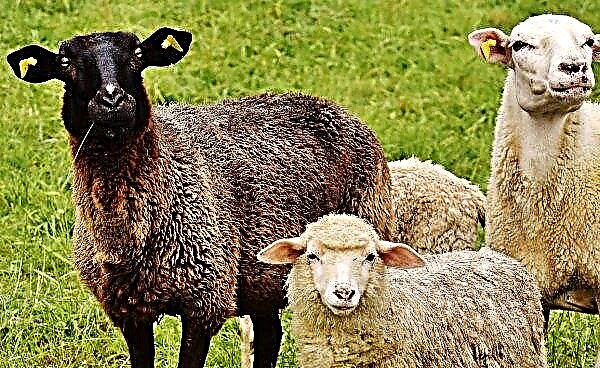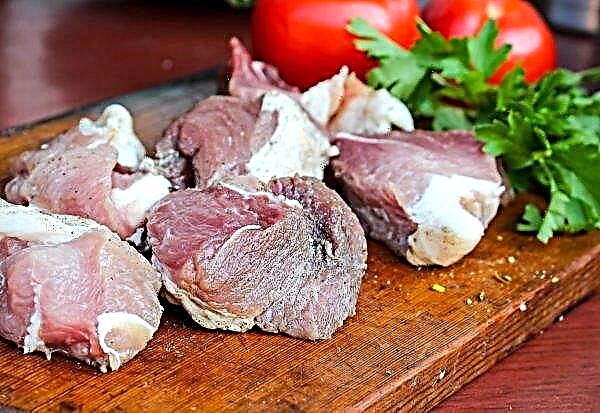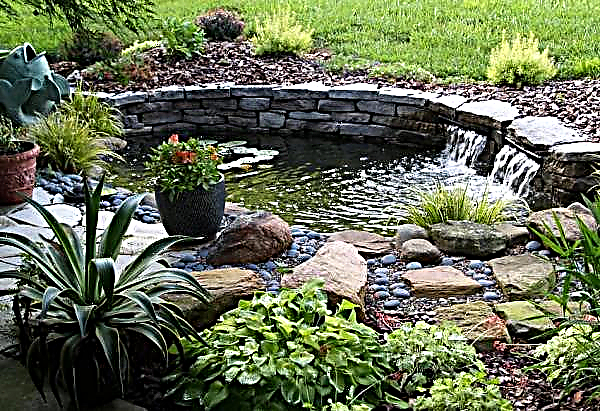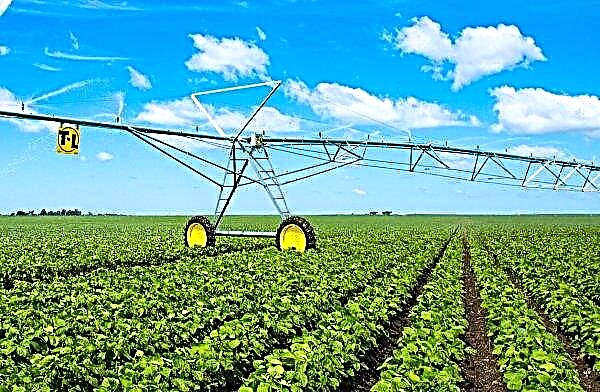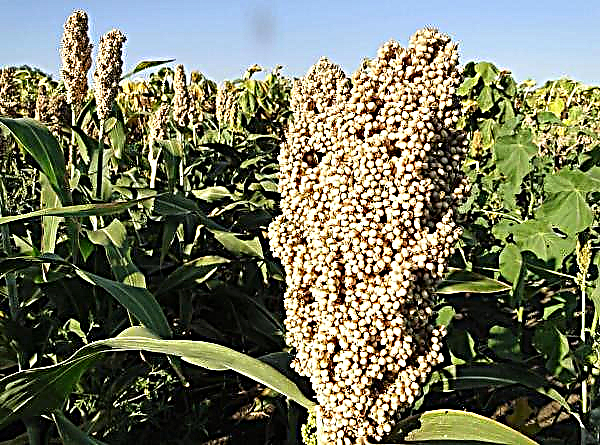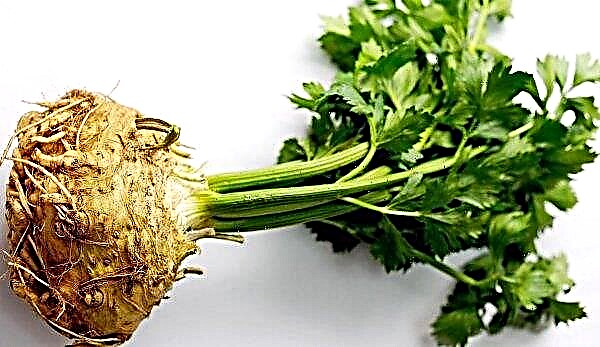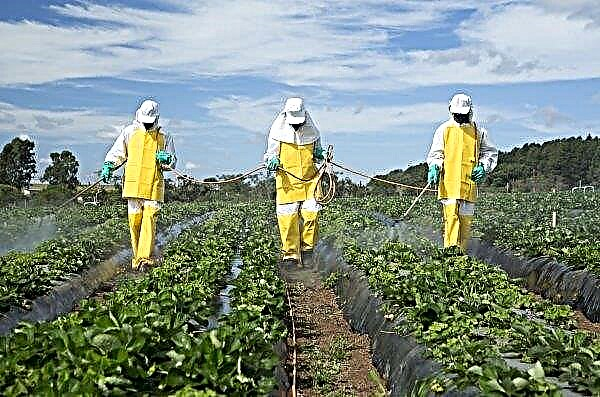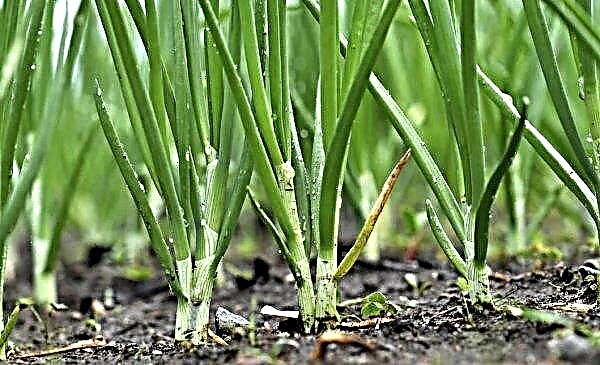The problem is known to many gardeners: seedlings were cultivated diligently, and bushes were planted on the bed on time, and as a result there were no peppers or there were not enough of them. Let's try to figure out why sweet or bitter peppers do not bear fruit, and what secrets you need to know in order to always have a high crop of vegetables grown on your own site.
Main reasons
There may be several reasons why peppers do not tie fruit, so the first thing to do when faced with such an unpleasant phenomenon is to try to make a "diagnosis" correctly.
Pepper Care Violation
In the vast majority of cases, it is gardener's mistakes that lead to the fact that the development of the plant does not end with fruiting. Pepper - a plant is quite demanding, and reacts very improperly to improper care.
Did you know? Despite the tradition in our area to call bell peppers “Bulgarian”, the first Europeans to get to know this vegetable were Spaniards. This happened around the fifteenth century, when the culture was brought to Europe from America, and for a long time this representative of the nightshade family was used by the inhabitants of the Old World exclusively as an ornamental plant.
Conditions that must be observed for abundant laying of ovaries:
- The correct formation of the bush. Contrary to the common misconception among some summer residents, this manipulation is necessary for pepper no less than for other crops grown in household plots. On open beds in most varieties, it is recommended to form two trunks (usually three are left in a greenhouse). But, more importantly, at the initial stage of flowering, it is imperative for the plant to pinch (remove) the lowest bud that appears at the beginning of the first branch on the bush - the so-called "crown flower". If this is not done, all the nutrients received by the plant from the soil will be directed to the formation of the first fruit, and the flowers located above, without receiving proper nutrition, will begin to dry and crumble, without tying the fruit.
- Balanced top dressing. If at the first stage of the growing season vegetables need to provide the whole complex of minerals, including nitrogen, phosphorus and potassium, then after flowering begins, an excess of nitrogen fertilizers in the soil leads to the fact that the plant begins to actively gain green mass to the detriment of fruit formation. Therefore, such top dressing as manure, humus, mullein, chicken droppings or urea must be used with great care, especially in the middle of the season.
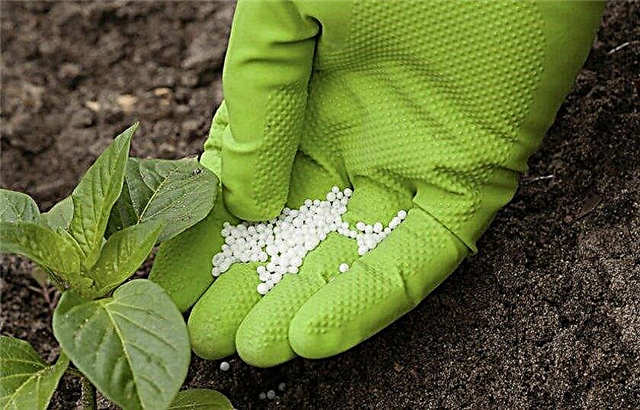
- Pollination. Pepper is a self-pollinated culture, but this does not mean at all that pollen on the pistil of a flower occurs by itself. For this to happen, pollen must have sufficient lightness and volatility, and in addition, the anther itself must mature and crack in time. At low temperature and high humidity, this does not happen, and if the air warms up to +30 ... + 35 ° C, the pollen becomes sterile, and even when it gets on the pestle, the fetus does not set. Of course, pollination problems are more relevant for plants grown in a greenhouse, where there are no reliable helpers such as wind and insects, but in adverse weather conditions and in an open area, plants may not be pollinated.
- Adequate amount of light, heat and moisture. Pepper is a light and heat-loving plant. With a sharp cold snap or temperature changes, shedding of flowers and fruit that has set in very often occurs. To the abundance of moisture, the plant is less demanding, but it can also respond to the drying of the soil by dropping buds or ovaries.
Important! The optimum temperature regime for pepper, which has entered the phase of flowering and fruiting, is in the range of +25 ... + 30 ° С. If the thermometer column drops below + 13 ° C, the root system of the plant completely freezes, the nutrition of the aerial part stops, and as a result both the flowers and the fruits die.
Disease
A variety of diseases can affect a sweet pepper plantation, including those from which there are no effective treatments (for example, tobacco mosaic). However, it should be noted that problems with fruit setting on an absolutely healthy apparently bush are almost never a direct symptom of a particular disease: the disease usually manifests itself differently, and the absence of fruiting is more likely the result of a lack of effective treatment. In order to recognize the threat in time and take adequate measures to eliminate it, you should know the distinguishing features and causes of the most common pepper diseases, namely:
In order to recognize the threat in time and take adequate measures to eliminate it, you should know the distinguishing features and causes of the most common pepper diseases, namely:
| Disease name | Reason (pathogen) | Key features |
| "Buttons" | Subcooling (lack of heat in the daytime), too dry air | Fruits do not develop, remaining in their infancy, or grow small and deformed, almost without seeds. During flowering, the problem manifests itself in unnaturally large and coarse, long-falling flowers. |
| Vertex rot | Deficiency of calcium, phosphorus, potassium or moisture | Watery spots on the sides of the fruit. When the bush is damaged in the early stages, the peppers rot at the point of attachment to the peduncle and fall off. |
| Blackleg | The collective name for fungal diseases that can be caused by different pathogens. | It begins with the darkening of the lower part of the stem, subsequently it can cause complete wilting of the bush, excluding the formation of ovaries. |
| Gray rot | Fungus Botrytis cinerea | A grayish coating, first striking the stem, then leaves, fruits and ovaries. |
| Bacterial wilt | Gram-negative bacterium Erwinia tracheiphila | Yellow spots on the leaves, the bush looks dried, the fruits are not tied. |
| Late blight | Fungus Phytophthora infestans | Leaves and buds shrink and dry out. |
| Brown spotting | Fungus Cladosporium fulvum | Light plaque on the leaves, gradually leading to their death. The plant cannot develop normally and set fruit. |
| Fusarium | Fusarium fungus | Twisting and wilting of leaves, decay of roots, flowers, ovaries. |
| Black spotting | Gram-negative bacterium Xanthomonas vesicatoria | Dark spots on the stems and leaves, as the disease develops, the ovaries die. |
Pests
In addition to diseases, the attack of pests can also prevent the active formation of ovaries in pepper. Perhaps the most insidious of them are ants. Building their dwellings in the loose soil of the garden, they harm the green spaces not by themselves, but because of the aphids with which these insects create stable and surprisingly strong symbioses.
Did you know? It's hard to believe, but hardworking ants deliberately spread aphids in their jaws along the stems of agricultural plants and carefully plant them on the leaves. It turns out that in the process of processing food, leaf aphids emit sweet and sticky honey juice, which is a favorite treat of ants.
Affected by aphids, the peppers turn yellow and curl, new fruits do not form on the bushes, and those that have time to appear dry and fall off. In addition to aphids, spider mites, slugs and Colorado beetles are also dangerous pests for peppers. If you do not respond to their attack on time, you can not wait for the crop.
In addition to aphids, spider mites, slugs and Colorado beetles are also dangerous pests for peppers. If you do not respond to their attack on time, you can not wait for the crop.
What to do if there are no ovaries
Having discovered that fruits are poorly tied on pepper bushes, measures must be taken whose nature depends on the possible cause of the problem.
So, if weather conditions or the microclimate in the greenhouse allow you to suspect difficult pollination, you can help the plant with:
- active ventilation of the greenhouse (during the laying of fruits, even a strong draft is less dangerous for plants than stagnation of warm and humid air);
- a fan or a hair dryer configured for cold air mode, with which they go around the beds and carefully blow flowers;
- light shaking of bushes, which helps dew to wake up and pollinate the stigma of a flower;
- artificial pollination - the mechanical transfer of pollen from one flower to another with a toothpick or needle, one end of which, for convenience and safety, can be stuck in an ordinary school eraser (eraser).
Important! In a pollinated flower, the petals bend back noticeably after a few days - this sign can help to understand that the works were successful.
If the formation of the ovaries can presumably be hindered by low temperature or its sharp drops, the plant needs to be strengthened with the help of special immunostimulants. Good results are obtained by processing the bushes on the leaves with such preparations as:
- "Bud";
- "Ovary";
- "Zircon";
- "Epin Extra";
- calcium nitrate.
 It must be remembered that both pollination and the formation of ovaries occur during the day, the plant rests at night, therefore it is necessary to carry out the spraying aimed at stimulating fruiting in the morning (in the evening the procedure will be useless).
It must be remembered that both pollination and the formation of ovaries occur during the day, the plant rests at night, therefore it is necessary to carry out the spraying aimed at stimulating fruiting in the morning (in the evening the procedure will be useless).Preventive measures
It is always better to try to prevent a problem than to try to deal with its consequences later. In order for pepper to bear fruit well, it is useful to take such preventive measures in advance:
- use only high-quality seeds from trusted producers for planting, as well as carry out their thorough pre-sowing preparation - disinfection, soaking in growth stimulants, bubbling, hardening;
- to plant seedlings in open ground at the scheduled time and not to allow it to be transplanted (pepper is very difficult to transplant, therefore, if seedlings begin to bloom even in cups, the stress received in the process of moving it to a new place can lead to shedding of flowers);
- when growing a plant in a greenhouse at the stage of its arrangement, provide a reliable ventilation and heating system if the climate in the region is quite cool;
- organize drip irrigation of the beds: this will always allow watering with well-heated water, as well as preventing it from falling on the leaves, which provokes sunburn and the development of diseases, especially late blight;
- correctly form bushes; always remove the lower flower in a timely manner;
- planting plants in pairs in close proximity to each other: this technique very well promotes cross-pollination;
- if necessary, start a family of bees or bumblebees (bumblebees are considered the best pollinators of peppers, they are always settled in large agricultural holdings in the immediate vicinity of the field);
- during the season several times to feed peppers with ash, which is a source of potassium;
- limit the use of nitrogen fertilizers (when growing peppers, they are, by and large, generally contraindicated);
- regularly remove weeds from the beds (they are the reserves of diseases and pests), or use soil mulching;
- in the autumn and spring, before planting, carry out preventive tillage from fungal infections and pests, it is best to use modern safe biological preparations for these purposes;
- remove from the garden all plant residues after harvesting;
- strictly observe crop rotation rules: do not plant the same or related plants in the same place for two years in a row.

Useful tips gardeners
In addition to general recommendations for the care of peppers, each experienced gardener has his own secrets to increase the yield. Here are some of the ways:
- In those regions where nights become cool already in August, starting from the second half of summer, beds with peppers should be protected with an awning made of light agrofiber. This technique will allow you to save and accumulate heat throughout the day, so that the period of fruiting pepper can be extended for an additional few weeks.
- To plant pepper not from north to south, but from west to east. In this case, the plants are better illuminated.
- Use the so-called "narrow beds" when planting: reduce the distance between plants while increasing the row spacing: bushes in the beds are planted in 2-3 rows with a distance of 50 cm to both sides of each other, at least 80-100 cm are left between the beds free space. With this scheme, it is much more convenient to take care of the plants, and pollination is much easier.
- Throughout the fruiting season, spray bushes (especially ovaries) three times with mash made from bread yeast and water three times. Such a drug is both a good dressing and a stimulator of fruit growth.
- After peppers reach a state of technical ripeness (this means that the fruit has grown to the required size, but has not yet changed color from green to red, yellow or orange), it is necessary to drastically reduce watering. This trick will accelerate the ripening of the crop. Feeding plants at this time should also not be.
 Many inexperienced summer residents believe that in order to get a good pepper crop it is enough to purchase ready-made seedlings in the market, plant them on a garden bed and sometimes water them. However, this is not the case. Pepper, especially sweet, is a very difficult culture to care for, and in order for the fruits to be tied together and grown to the right size, many agricultural rules must be observed. Only in this case will the efforts give the expected result.
Many inexperienced summer residents believe that in order to get a good pepper crop it is enough to purchase ready-made seedlings in the market, plant them on a garden bed and sometimes water them. However, this is not the case. Pepper, especially sweet, is a very difficult culture to care for, and in order for the fruits to be tied together and grown to the right size, many agricultural rules must be observed. Only in this case will the efforts give the expected result.


